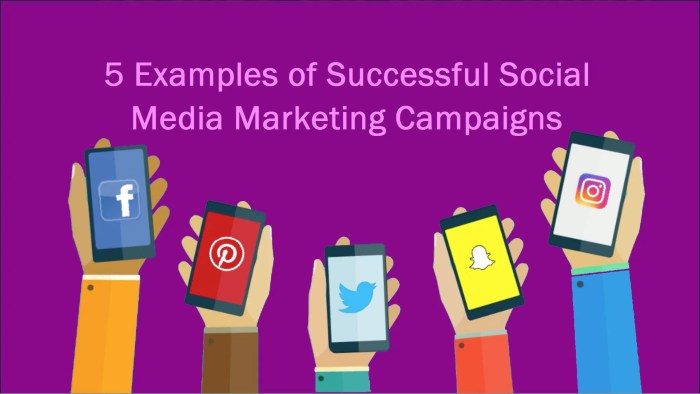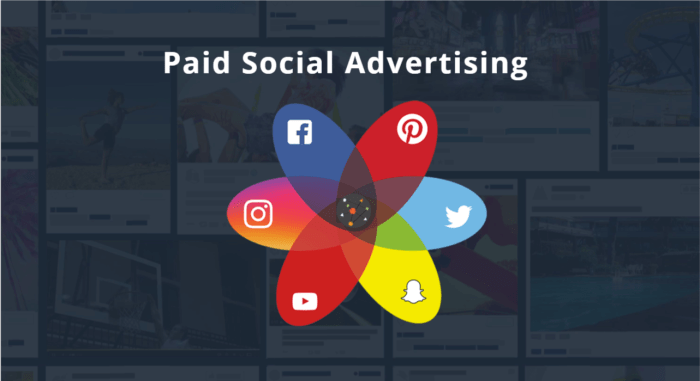
Starting with Social media advertising services, the narrative unfolds in a compelling and distinctive manner, drawing readers into a story that promises to be both engaging and uniquely memorable.
In the realm of digital marketing, social media advertising services have become indispensable tools for businesses looking to reach a wider audience and increase brand awareness. This guide delves into the intricacies of leveraging social media platforms for advertising services, exploring different types, best practices, and key steps involved in successful campaigns.
Social Media Advertising Services
Social media advertising services refer to the professional assistance provided to businesses for creating and managing advertising campaigns on various social media platforms to reach their target audience effectively.
Popular Social Media Platforms for Advertising Services
- Facebook: With over 2.8 billion monthly active users, Facebook offers a wide range of advertising options, including targeted ads based on demographics, interests, and behaviors.
- Instagram: As a visually-focused platform, Instagram is ideal for businesses looking to showcase products or services through photo and video ads to engage with a younger demographic.
- LinkedIn: Known for its professional networking focus, LinkedIn is beneficial for B2B businesses targeting specific industries or job titles through sponsored content and InMail ads.
- Twitter: Twitter allows businesses to promote tweets, accounts, or trends to increase visibility and engagement with a real-time focus on news and trending topics.
Benefits of Using Social Media Advertising Services for Businesses
- Targeted Reach: Social media platforms offer advanced targeting options to reach specific demographics, interests, and behaviors, ensuring ads are shown to the right audience.
- Cost-Effective: Compared to traditional advertising methods, social media advertising services are generally more affordable, allowing businesses to reach a larger audience within their budget.
- Engagement and Interaction: Social media ads encourage engagement through likes, comments, and shares, fostering a sense of community and building relationships with customers.
- Measurable Results: Businesses can track the performance of their ads in real-time, analyzing metrics such as reach, engagement, clicks, and conversions to optimize future campaigns for better results.
Types of Social Media Advertising
Social media advertising offers a variety of options for businesses to reach and engage with their target audience. Let’s explore some of the different types of social media advertising services available:
Video Ads vs Image Ads
When it comes to social media advertising, both video ads and image ads have their own advantages and effectiveness in capturing the audience’s attention. Here is a comparison between the two:
- Video Ads:
- Video ads tend to be more engaging and can convey a message effectively through visuals, audio, and motion.
- They have higher conversion rates compared to other types of ads, as they can create a strong emotional connection with the audience.
- Video ads are more likely to be shared by users, increasing brand visibility and reach.
- Image Ads:
- Image ads are quick and easy to consume, making them suitable for capturing the audience’s attention in a short span of time.
- They are cost-effective compared to video ads, making them a good option for businesses with budget constraints.
- Image ads can be highly impactful when designed creatively and aligned with the brand’s messaging.
Targeting Specific Audiences
Targeting specific audiences in social media advertising campaigns is crucial for maximizing the effectiveness of the ads. Here’s why targeting plays a significant role:
- Reaching the Right Audience:
- By targeting specific demographics, interests, and behaviors, businesses can ensure that their ads are shown to the most relevant audience.
- Targeting helps in reducing ad wastage by showing the ads only to those who are likely to be interested in the product or service.
- Improving Ad Performance:
- Targeted ads have a higher chance of resonating with the audience, leading to better engagement and conversion rates.
- Businesses can personalize their messaging and offers based on the targeted audience segments, increasing the relevance of the ads.
Best Practices for Social Media Advertising

In the world of social media advertising, it is essential to follow best practices to ensure the effectiveness of your campaigns and maximize your ROI. Here are some key tips to consider:
Tips for Creating Engaging Ad Content
Creating engaging ad content is crucial to capturing the attention of your target audience and driving conversions. Here are some tips to help you create compelling ad content:
- Utilize eye-catching visuals: Images and videos are more likely to grab the attention of users scrolling through their feeds.
- Write compelling copy: Craft concise and persuasive messaging that clearly communicates the value proposition of your product or service.
- Include a strong call-to-action (CTA): Encourage users to take action by including a clear and compelling CTA in your ad copy.
- Target the right audience: Use audience targeting tools to ensure your ad is reaching the most relevant users for your business.
- Test different ad formats: Experiment with different ad formats, such as carousel ads, video ads, and stories ads, to see what resonates best with your audience.
The Significance of A/B Testing
A/B testing, also known as split testing, is a crucial practice in social media advertising that involves testing two versions of an ad to see which performs better. By conducting A/B tests, you can identify the most effective ad elements and optimize your campaigns for better results. This can include testing different visuals, copy, CTAs, and targeting options to determine what resonates best with your audience.
Importance of Tracking Metrics and Analytics
Tracking metrics and analytics is essential for measuring the success of your social media advertising efforts. By monitoring key performance indicators (KPIs) such as click-through rates, conversion rates, and return on ad spend, you can gain valuable insights into the effectiveness of your campaigns and make data-driven decisions to optimize your ad strategy. Regularly analyzing metrics allows you to identify trends, pinpoint areas for improvement, and continuously refine your advertising approach for better results.
Social Media Advertising Campaign
Setting up a social media advertising campaign involves several key steps that are crucial for its success. From defining goals to analyzing results, each step plays a vital role in reaching the target audience effectively.
Key Steps in Setting up a Social Media Advertising Campaign:
- Define Your Goals: Clearly Artikel what you want to achieve with your campaign, whether it’s brand awareness, lead generation, or sales.
- Identify Your Target Audience: Understand who your audience is and what platforms they are most active on to tailor your ads accordingly.
- Create Compelling Ad Content: Develop engaging and visually appealing content that resonates with your audience and conveys your message effectively.
- Set a Budget and Schedule: Determine how much you are willing to spend and schedule your ads to reach your audience at the right time.
- Monitor and Analyze Results: Track the performance of your ads, analyze the data, and make adjustments to optimize your campaign for better results.
Examples of Successful Social Media Advertising Campaigns:
One of the most successful social media advertising campaigns was Coca-Cola’s “Share a Coke” campaign, where personalized bottles with people’s names were created. This campaign led to a significant increase in sales and engagement, showcasing the power of personalization in advertising.
The Role of Influencers in Social Media Advertising:
Influencers play a crucial role in social media advertising by promoting products or services to their followers. Collaborating with influencers can help brands reach a wider audience and build credibility through authentic recommendations. Influencer marketing has become a popular strategy for brands looking to leverage the influence of social media personalities to enhance their advertising efforts.
Advertising Service

An advertising service encompasses the planning, creation, and execution of advertising campaigns to promote products or services to a target audience. These services can range from traditional print and broadcast advertising to digital marketing strategies.Traditional advertising services typically involve methods such as TV commercials, radio ads, billboards, and print media. On the other hand, digital advertising services utilize online platforms like social media, search engines, and websites to reach consumers in a more targeted and measurable way.
Differences between Traditional and Digital Advertising Services
- Reach and Targeting: Digital advertising allows for more precise targeting based on demographics, interests, and online behavior. Traditional advertising has a broader reach but may not be as targeted.
- Cost and ROI: Digital advertising often offers more cost-effective options and allows for real-time tracking of results. Traditional advertising can be more expensive and harder to measure the return on investment.
- Engagement and Interactivity: Digital advertising enables interactive and engaging content, such as quizzes, polls, and videos. Traditional advertising is more passive and one-way communication.
Choosing the Right Advertising Service Provider
- Evaluate Experience and Expertise: Look for a provider with a proven track record in your industry and a deep understanding of both traditional and digital advertising strategies.
- Consider Budget and Services Offered: Determine your budget and the specific advertising services you need, whether it’s social media marketing, PPC advertising, content creation, or a combination of services.
- Check References and Reviews: Research the provider’s reputation, read client testimonials, and ask for case studies to gauge their effectiveness and reliability.
To sum up, mastering the art of social media advertising services can propel your business to new heights by connecting with your target audience effectively and driving conversions. By implementing the insights shared in this guide, you can optimize your advertising strategies and stay ahead in the competitive digital landscape.
User Queries
What makes social media advertising services different from traditional advertising?
Social media advertising services leverage digital platforms like Facebook, Instagram, and Twitter to reach specific target audiences with tailored ads, whereas traditional advertising typically involves print, TV, or radio ads targeting broader demographics.
How can businesses effectively choose the right advertising service provider?
Businesses should consider factors like the provider’s expertise in social media advertising, their track record of successful campaigns, and their understanding of the business’s unique needs and goals before selecting an advertising service provider.
Why is A/B testing crucial in social media advertising campaigns?
A/B testing allows businesses to experiment with different ad variations to determine which ones resonate best with their target audience, leading to optimized ad performance and higher conversion rates.





